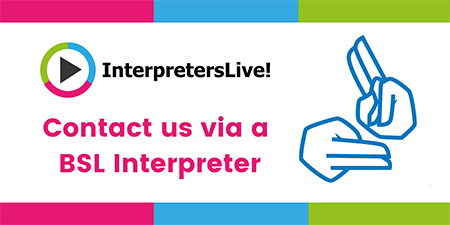Want to know one of the most commonly misused terms in recruitment and hiring?
Culture fit.
Whenever I ask recruiters or hiring managers to explain their culture, I often get vague, subjective answers. It usually comes down to how someone feels about working there, not what the culture actually is.
Most of the time, what I hear is actually about should be described as social fit. Things like, “we all get along,” “we’re like a family,” “we love socialising together,” or “we have loads in common.” All too often, however, it’s incorrectly called “culture fit”.
It’s always a bit messy and vague, and that’s what worries me. So many hiring decisions are being made based on likeability, gut feeling, and a sense of familiarity rather than capability. And it’s costing businesses.
When we don’t understand the difference between culture fit and social fit, we end up making poor hiring decisions, missing out on brilliant candidates, and undermining our diversity, equity, and inclusion goals.
The likeability trap
Humans look for safety and familiarity. We naturally gravitate towards people who remind us of ourselves, who reflect our own values, interests, and communication styles. This is called affinity bias. It’s one of the most influential forces at play, especially in recruitment.
That’s what fuels the so-called “gut instinct” when choosing candidates. It’s also how we end up hiring people who are just like the existing team, over and over again.
I still see hiring teams use social fit to justify why they chose someone or, more often, why they didn’t. This practice goes unchallenged in almost every business, and in my opinion, it’s one of the biggest risks to DE&I in recruitment.
Full disclosure, I’ve benefited from it. I’ve walked into interviews and leaned on the likeability factor, building rapport, steering the conversation, and connecting with interviewers on a personal level. I’ve got through four-stage processes without answering a single competency-based question and landed the job.
Luckily, I was a competent hire. But no one actually gathered that evidence. I could have just as easily been an expensive mistake. And this is where the issue lies. Just because they are likeable does not mean they are capable.
What this means for team performance and diversity
Hiring for likeability over capability will, eventually, lead to a disconnect between what the business needs and what the business gets.
I’ve seen it happen. We hire someone because we like them, but they don’t perform. Or they clash with our leadership style. Or they don’t align with our ways of working. And when we look back, we realise we never really assessed for any of that properly.
Instead, we focused on surface-level stuff. Their CV looked good, they said all the right things, and they just felt right.
But all of that time, money, effort that happened now need to be repeated.
This approach doesn’t just slow down hiring. It hurts team dynamics, reduces diversity of thought, and creates cultures of sameness.
What is Culture Fit and Social Fit?
The question you probaly want answered by this point is “What’s the difference then between culture and social fit?”
Social fit is all about how an individual’s own personality and likeability matches your own. As individuals or as a small team.
Culture fit is about your company’s values, approach to work, leadership, and management, as well as how its targets align with the workers own values and goals.
Or to put it another way – social fit is about who you enjoy working with while culture fit is about how you enjoy working in and with the team and company.
It’s a subtle difference on the surface, but dig a little deeper and you will realise how wildly different those two fits are.
The real cost of ‘fit’
When I run training for hiring managers, I often ask them to calculate the financial loss of each failed recruitment project. Especially when the reason not to hire is written off as “wrong fit.”
The numbers are eye-watering. We’re not just talking about time and resource here. We’re talking about empty seats, increased agency spend, internal frustration, and in some cases, six-figure losses.
Let me repeat that, SIX FIGURE LOSSES because you hired the wrong person.
If that kind of loss happened anywhere else in the business, something would be done about it immediately. But because culture fit is so poorly understood, it continues to fly under the radar.
But culture fit matters when done right.
I’m not saying social fit doesn’t matter. It absolutely does, but only when you’re clear about what you’re assessing and why.
There is nothing wrong with wanting someone to thrive in your environment. It’s important to understand whether someone will be happy in the role, whether they’ll enjoy working under a certain management style, or whether their work preferences align with your team’s approach.
That’s inclusion. It helps people bring their whole selves to work and feel psychologically safe. It also contributes to retention, performance, and employee wellbeing.
But none of this is possible if you haven’t first defined what your culture actually is.
Define your culture before you assess it
One of the biggest challenges I see is hiring managers trying to assess culture fit without being able to explain their own culture.
That’s like trying to fix a car but not being able to explain what the engine does.
If you don’t know what your company values are, what behaviours drive your business, or how your teams work day to day, how can you expect to assess for alignment?
A well-defined culture goes beyond what’s on your website or the quoted on your office wall. It’s about the real experiences people have at work. And you need to understand that culture at both a macro and micro level, because microcultures exist in every business (think how the HR team works versus the IT department, and you get the idea).
A full culture audit should explore how leadership shows up, how people are managed, how communication flows, and how decisions are made. It should recognise that different departments or teams may experience culture differently.
And once you’ve defined it, you can start building proper tools to assess alignment in a structured, inclusive, evidence-based way.
Where to start
It’s completely normal to feel overwhelmed. This work takes time. You can’t solve it with a half-day workshop or a new set of interview questions.
But the benefits of getting it right are huge. You’ll run better interviews, give candidates a stronger experience, increase retention, reduce conflict, improve team performance, and build a more diverse and inclusive workforce.
So, no more hiring for mates. You don’t need social synergy to build a great team.
Difference is powerful. Inclusion is strategic. And shared values, purpose, and direction will always beat shared hobbies, personalities, or tastes in music.
Need help getting clearer on your culture?
I support recruitment teams, hiring managers, and business leaders to define their culture and assess alignment in a way that drives performance, inclusion, and retention.
If your hiring process needs a reset, or you want to stop making likeability-based hiring decisions, get in touch. Let’s build a hiring culture that actually works.


